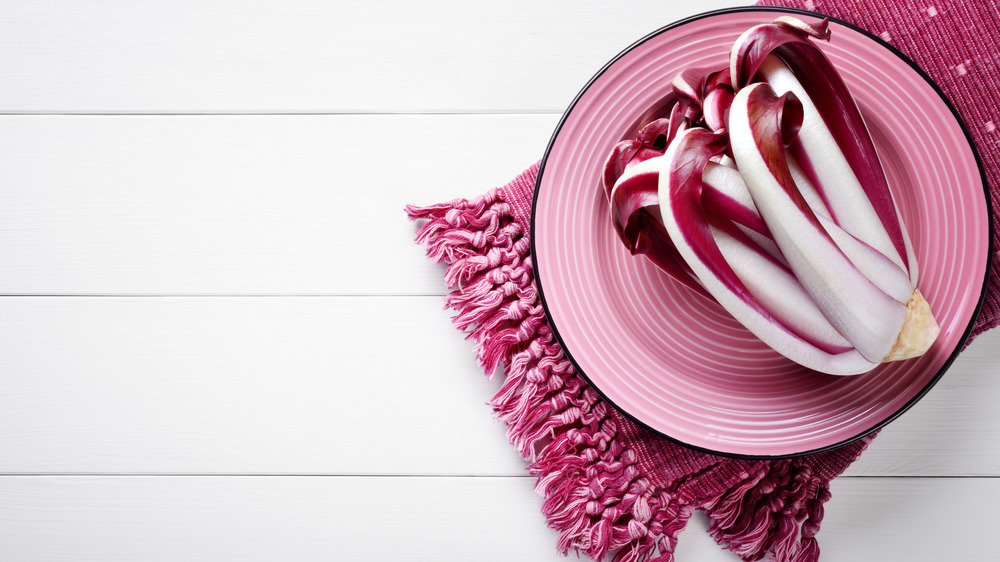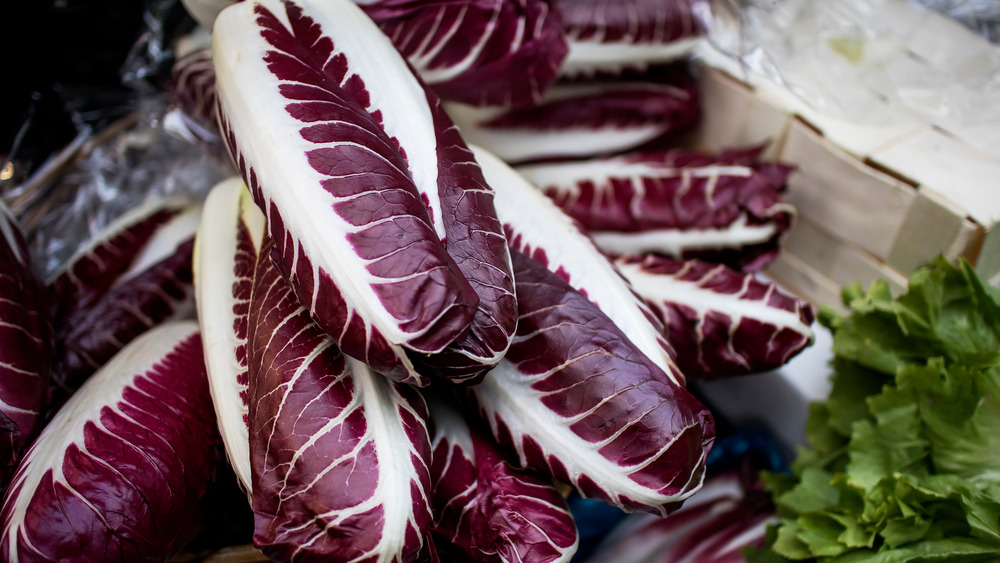What Is Radicchio And What Does It Taste Like?
Plain ol' green salads and veggies can sometimes get a bit tepid and monotonous. A perfect antidote for when that ennui settles over your dinner table? Radicchio. The brightly flavored, slightly bitter, uber-colorful vegetable is superb, raw or cooked, and is incredibly versatile. Unsure what exactly radicchio is? Don't fret — you've come to the right place.
Stated simply: Radicchio is pretty. Pronounced "ruh-DEE-key-oh" according to Food52, it is technically a member of the chicory family and resembles a reddish cabbage of sorts, or some type of magenta-tinged, overgrown endive. According to Spruce Eats, it is primarily grown in Italy and the US. It's also a part of the sunflower family — believe it or not — according to Food52.
It is excellent as a replacement for blasé lettuce in a salad, a terrific vegetable side alternative, fantastic as a pizza topping, and much more. It's also great in pastas and risottos. When eaten raw, its crunch lends a wonderful textural component to any salad. It also pairs beautifully with sweet or creamy ingredients, such as goat cheese or golden raisins, and can even be used in desserts or beverages. Eaten raw, its bitter notes can be a bit overpowering, but it mellows beautifully when cooked. It also stands up to meat really well, and is excellent when paired with sausage. It's also fantastic grilled.
Why should I eat more radicchio?
Spruce Eats states that it is usually available year-round, but is best during the colder months. Eating Well notes that the larger the head, the more bitter, so it might be wise to avoid any larger radicchio if you're planning on using it for a raw preparation. The most common variety is Chioggia, but Treviso is also popular — it is typically a more elongated-looking plant, according to Spruce Eats.
Taste notes that Marcella Hazan actually referred to radicchio as "the most magnificent vegetable" in her 1997 book Marcella Cucina, but America was a bit slow on the uptick when it comes to warming to the lovely vegetable. It's also a more bombastic flavor, which was perhaps not as desired 25 years ago as it is now. What's Cooking America waxes poetic about the ruby vegetable: "donning regal robes of maroon and cream, radicchio reigns supreme among traditional Italian vegetables." From a nutrition perspective, Spruce Eats states that it is "low in calories and fat and high in vitamin K." Farmer Food Share also notes that it contains lactucopicrin, manganese, copper, iron, zinc, and potassium, as well as lots of B-complex vitamin groups.
So the next time you're unsure of what to stir into your pasta or what to use in a tossed salad, forego the green. Think radicchio.

